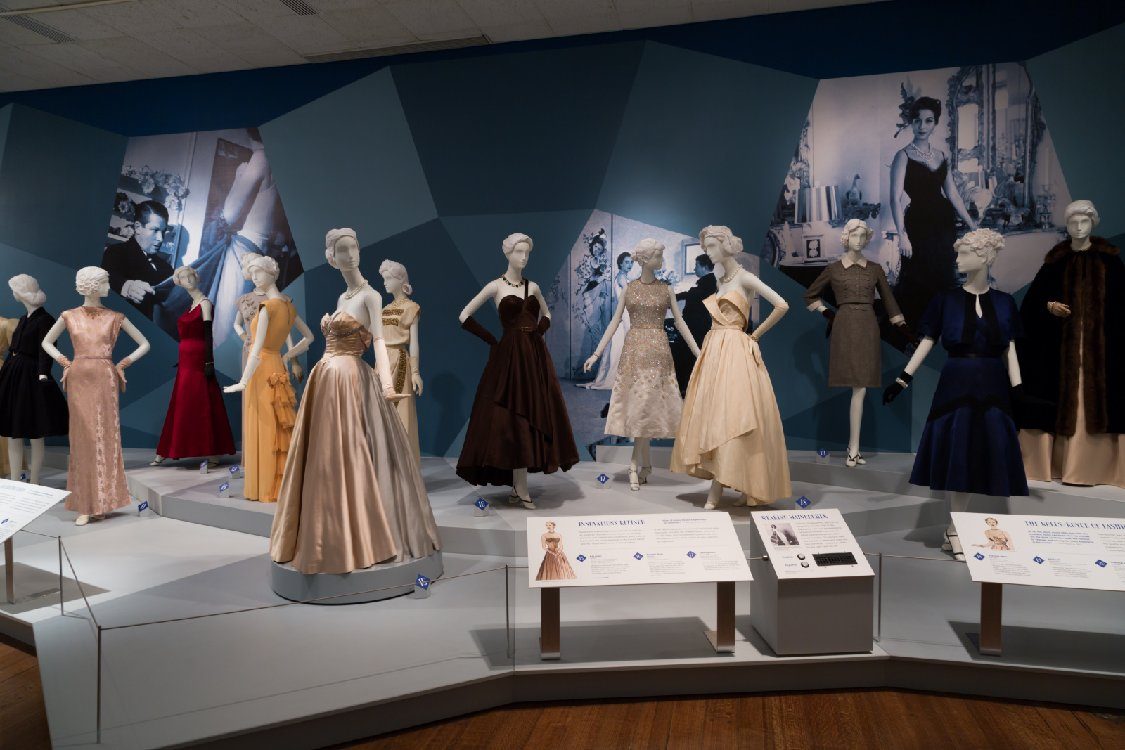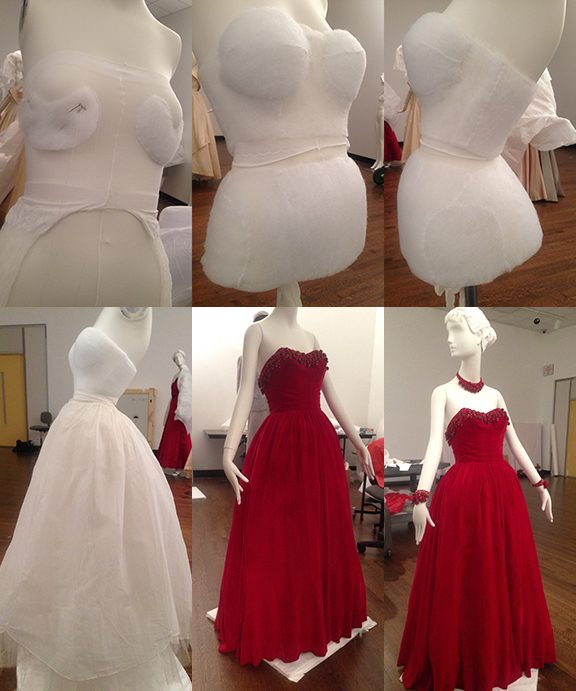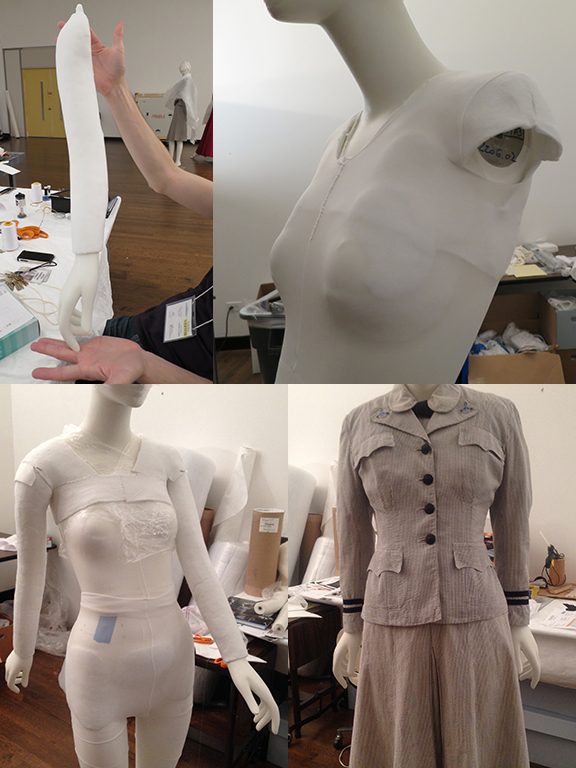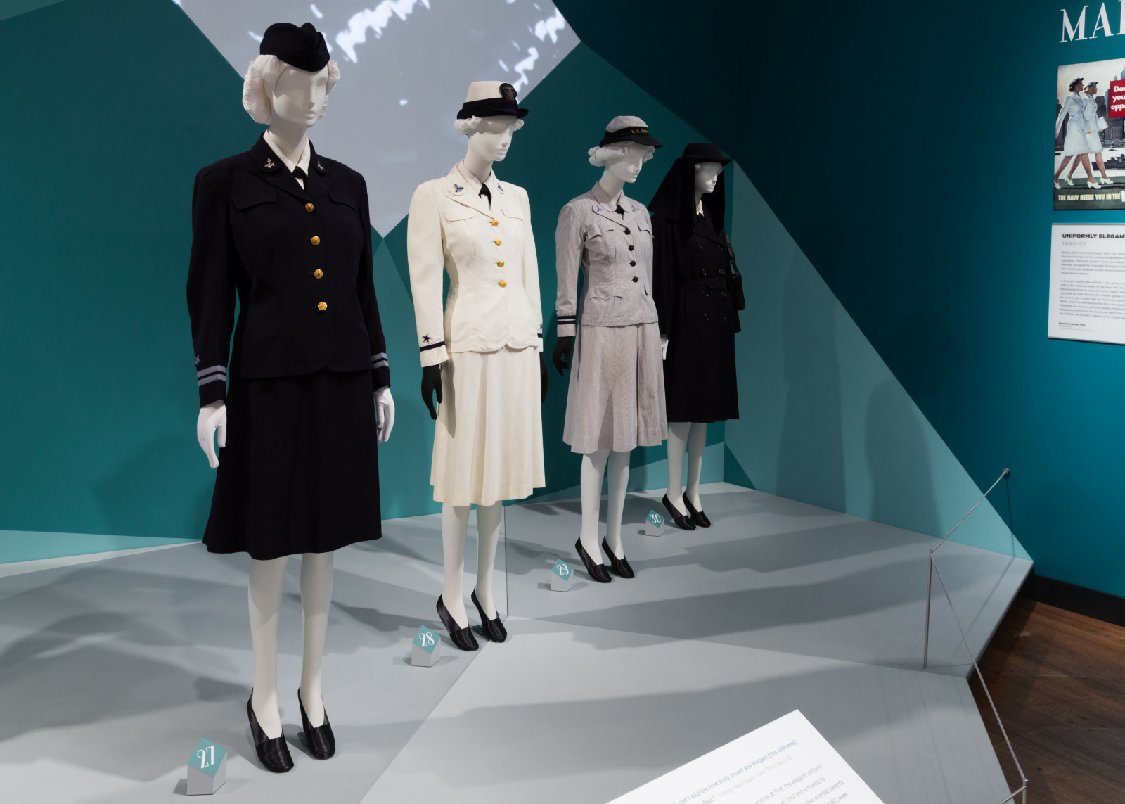In fashion exhibitions, many things vie for attention. The focus, of course, is on the garments with their rich fabrics, vibrant colors, and sparkly embellishments. But, how do these pieces go from collection storage (hanging on a rack or packed in a box) to beautifully mounted on a mannequin?

A common misconception is that the clothing is altered to fit the mannequins, but the opposite is actually true: each mannequin is modified to fit its garment. While many options are available to achieve this, a widely accepted practice is using high-tech tools: pantyhose and polyester fiberfill or batting (the soft, squishy stuff used between blankets). Museum staff and contractors used this technique in Making Mainbocher: The First American Couturier.
First, we considered the size and silhouette of the piece as well as environmental factors, such as gravity and light. After a conservation assessment to confirm the stability and condition of a garment, we took careful measurements, selected a mannequin, and covered it with nylon pantyhose to create a second skin to which we would sew the fiberfill. It was important to consider the time period of the garment and build the foundation accordingly. These photographs show the build out for a 1947 strapless evening dress. The padding creates a higher bustline and fuller hips, bosom, and backside, achieving the much-loved S-curve.

Next, we used a layer of pantyhose to cover the loose fiberfill and added appropriate underpinnings (petticoats) for additional shape. Once the form matched the garment’s measurements and achieved the desired silhouette, we dressed and accessorized the mannequin.
But what happened when a mannequin didn’t fulfill the needs of its costume?
Our seersucker WWII Navy WAVES (Women Accepted for Volunteer Emergency Service) uniform required shorter arms to fit its sleeve length, so we had to build new arms and attach them to preexisting mannequin hands. To achieve this, we used Fosshape and Ethafoam. Fosshape is a low-melt synthetic polyester fiber similar to felt. In its non-activated state, it can be sewn and manipulated, like fabric, but when heat is applied, the fibers melt and harden. Ethafoam is dense foam that can be carved. These materials are chemically stable to reduce off-gassing (chemical breakdown) and protect the overall wellbeing of the Museum’s collection.
We began by wrapping a preexisting mannequin arm with cellophane and sewing pieces of Fosshape around it like a close-fitting sleeve. Heating the Fosshape created a shell, so when we removed the arm, an exact replica remained. We then trimmed the shell to the appropriate length and fitted it with lightweight but rigid Ethafoam for stability. Using hardware and hot glue, we secured the new arm to its hand and then covered it in pantyhose for easier dressing.

To attach the new arms to the mannequin body, we duplicated the ball-and-socket joint of a human shoulder. By wrapping the original mannequin arms in Fosshape, we created yokes (or shoulder sockets). After confirming that the arms were a good fit, we used heavy-duty Velcro to attach them to the yokes. The last two photographs show the final dressing and test-fit of the uniform.
So, the next time you hear someone muse, “What’s under there?” You can respond, “A lot more than you think!”

Additional Resources
- See all of the garments featured in Making Mainbocher: The First American Couturier
- Learn more about our Costume and Textiles collection
- View our Google Arts & Culture story Making Mainbocher: The First American Couturier
Michael Hall, an independent contract mount maker, worked on Making Mainbocher as well as previous Chicago History Museum exhibitions, including Charles James: Genius Deconstructed and I Do! Chicago Ties the Knot.